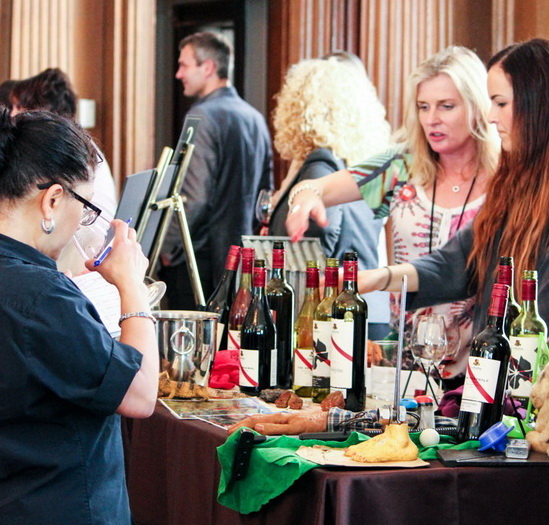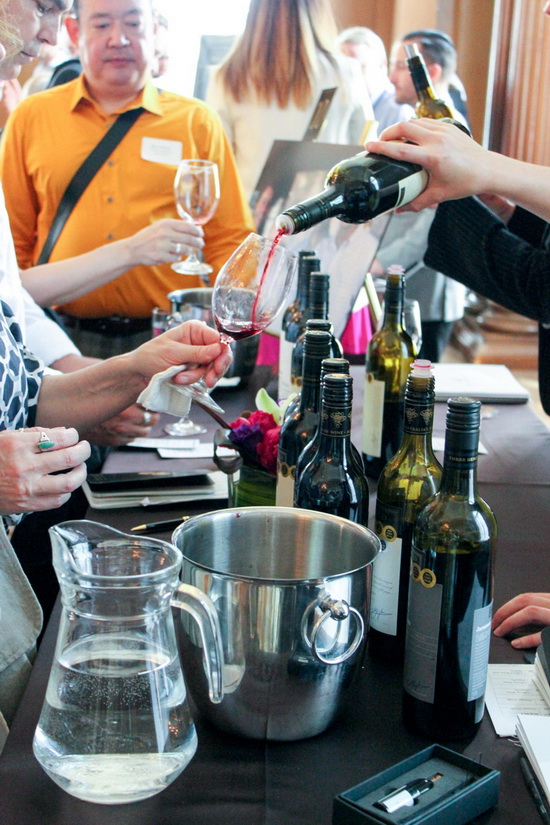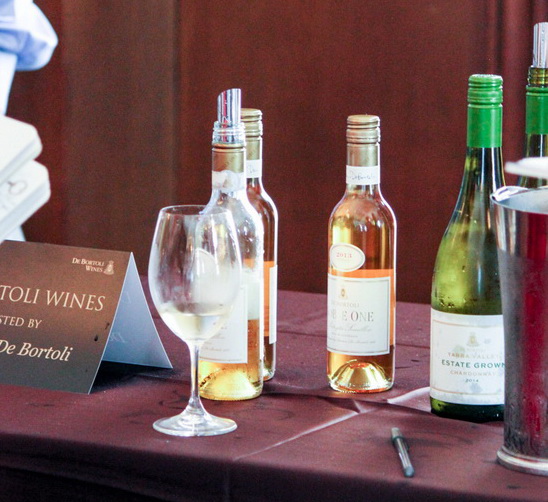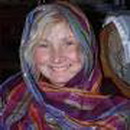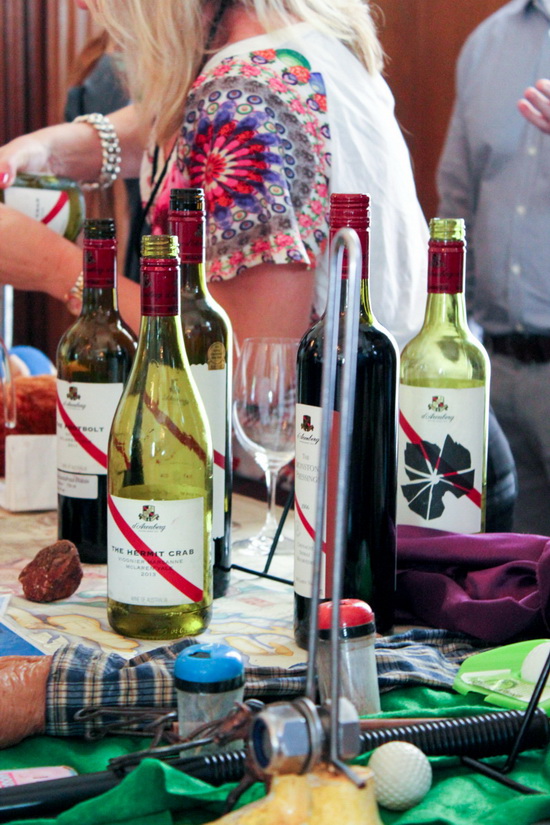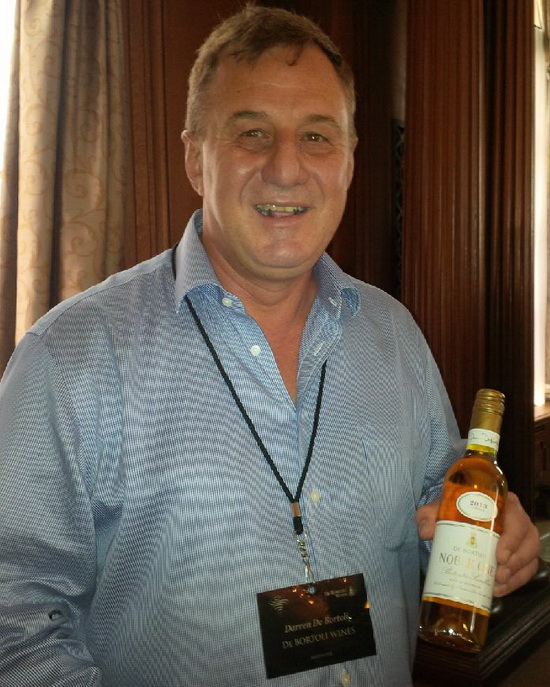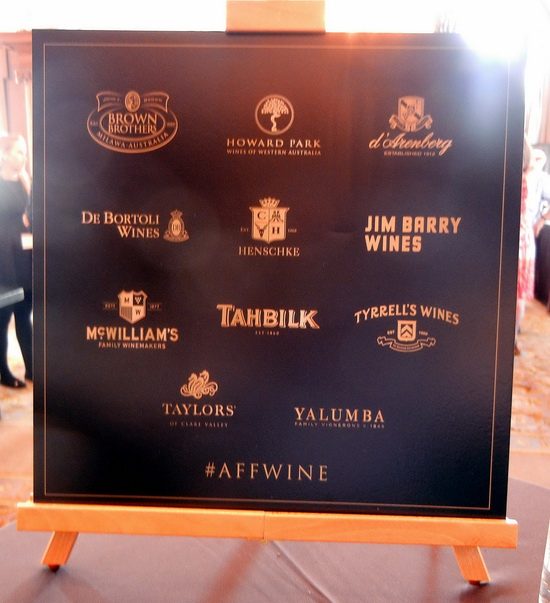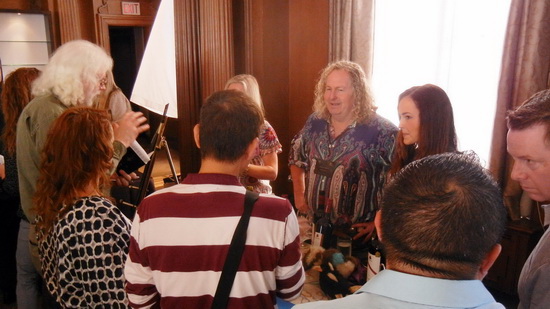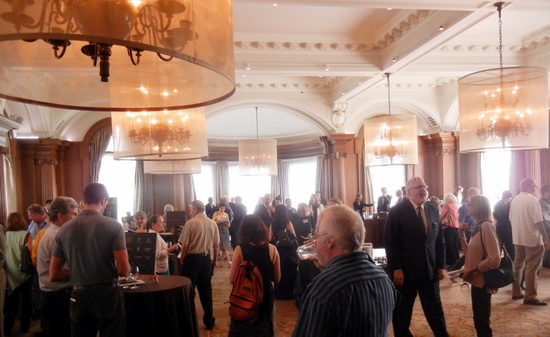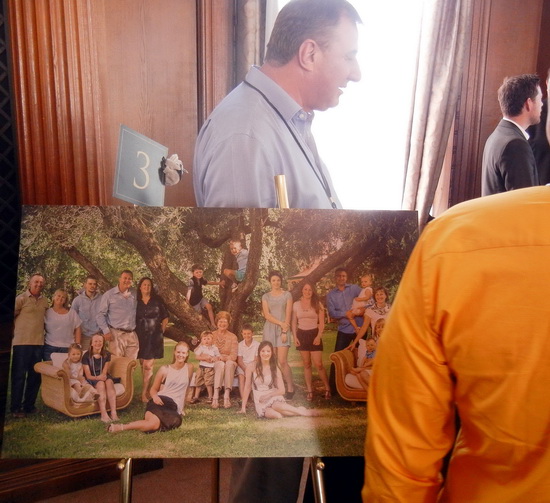By Kristy Gardner, Wine Writer, Photographer, Designer
I’ve never been to Australia. But hot damn, after the Australian First Families of Wine (AFFW) Unlock Tour de Force event in Vancouver this week, I want to go.
The setting: 22 wines, 60 minutes, and some pretty epic “coming-of-age” stories later, Robert Hill-Smith of Yalumba Family Vignerons c. 1849 – and the 11 other family owned wineries belonging to the AFF – welcomed us with a generous sampling of some of best wines Australia has fermented.
Presenting hand selected, flagship wines ranging in varietals from the lesser known Tempranillo or Marsanne to Australia’s classic and well known Shiraz, or Chardonnay, spanning in date from 1996 – 2014, the winemakers highlighted the character and personality of each vintage and the narrative behind it.
Jim Barry Wines The Lodge Hill Shiraz 2012
Clare Valley, South Australia
Taking some time after the speed tasting to chat with Peter Barry of Jim Barry Wines (located in the Clare Valley), Barry told me his wines aren’t after mass appeal; they’re about creating something that has history, is complex and maintains a certain value that’s reflective of the kind of experience he likes to create.
They’re about family, artisan practices (such as open barrel fermentation and free-run juice), and community, both at home in South Australia and around the globe.
Barry and the other members of AFFW highlighted the craft of Australian wine making through multi-generational stories of history and place, emphasizing the connections we have with each other through our experiences, our creativity, and our glass.
I can toast to that.
Kristy Gardner
sheeats.ca
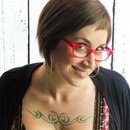 Freelance writer and photographer Kristy Gardner has a penchant for locally grown organic food, seasonal cocktails, carbs bad 80’s films, bourbon and pigs.
Freelance writer and photographer Kristy Gardner has a penchant for locally grown organic food, seasonal cocktails, carbs bad 80’s films, bourbon and pigs.
She can be found on her food blog SheEats.ca or her Vancouver based design and social media company, peppercorncreative.com.
By Mymi Myriam, The Singing Sommelier
We all want to be seduced… So when I heard about a “speed-dating” inspired wine-tasting, I was intrigued. When I heard that the wines for this fascinating event were going to be from none other than Australia’s First Families of Wine in Toronto, suddenly May 26th became a highly anticipated day on my calendar.
The countdown was on.
Australia’s First Families of Wine (AFFW) was founded in 2009 and came together to raise the profile of quality Australian wine at home and around the world. Twelve family-owned wineries belong to this prestigious group: McWilliam’s, Tahbilk, Tyrrell’s Wines, Wakefield, Yalumba, Brown Brothers, Campbells, d’Arenberg, De Bortoli Wines, Howard Park, Henschke and Jim Barry Wines.
Henschke Tilly’s Vineyard 2013
Adelaide Hills, Eden Valley, South Australia
I arrived at the Art Gallery of Ontario at 1:30pm sharp and was warmly greeted, given a table number, an empty glass and a booklet describing what was to be served. The Chairman welcomed us and candidly informed us that the aim of this afternoon’s event was to seduce us.
Mcwilliam’s Appellation Series Tumbarumba Chardonnay 2013
Tumbarumba, New South Wales, Australia
The first bell moved the thirsty crowd to their assigned tables and the first two wines. A second bell sounded six minutes later, indicating a move to the next table and another two wines. Eleven of the twelve families were represented, so there were 11 tables to visit and 22 wines to taste in just over an hour.
We were romanced by the most exquisite selection of wine, from the driest, most unusual whites, to the fullest bodied reds – even a sweet botrytised nectar.
The wines were alluring, stunning, and at times jaw-dropping, but do you want to know what “seduced” me the most?
Howard Park Flint Rock Chardonnay 2012
Great Southern, Western Australia
The intense passion of each speaker (and the Australian accents). At every table, a member of the family, or even the winemaker himself, welcomed every one of us and lovingly shared as much as they could in the allotted 6 minutes about their land, their family history, and of course, their wines.
Their enthusiasm is transformed into an obsession to craft wines that represent the bond they feel to their vineyards and their family.
The diverse panoply of wine styles represented by these 11 families was of the highest quality. Australia may be a powerhouse in new-world style wine production, but AFFW is a reminder of the country’s ability to craft unique, artisanal, yet world-class wines as diverse as its soils, climate and wine regions.
So was I seduced? Too right mate!
Mymi Myriam
Sommelier, Musician, Blogger
 Mymi is a sommelier, singer-songwriter, musician and voice-over artist with a serious and contagious passion for wine, food and music.
Mymi is a sommelier, singer-songwriter, musician and voice-over artist with a serious and contagious passion for wine, food and music.
When asked why she is so enthusiastic about wine, she replies; “Wine connects so many elements of life that I absolutely love! From growing herbs and vegetables to cooking, eating, travelling, entertaining, studying… There is always something new to learn in the world of wine. Sharing my knowledge with people, no matter their level of expertise, is something I sincerely enjoy.”
Her qualifications include certifications from The Court of Master Sommeliers, The International Sommelier Guild, The Society of Wine Educators, The Ontario Wine Council and most recently, The French Wine Society. Being a performer, it is with ease that she shares her knowledge in a down-to-earth, exciting, comprehensible and unpretentious way.
She is completing the French Wine Society’s Master-Level program studying the region of Provence, is in the early stages of creating a food/wine/music show, is a regular contributor to Natalie.MacLean.com and is currently recording her first all-French album.
By Allison & Chris Wallace
What made this tasting extra special were the people pouring the wines: it was the owners themselves, not some local distributer, but the founders or direct descendants of the founders themselves.
We doubt there are many Canadians who have met the owner of an iconic Australian winery, but there we were with twelve of the most important, tasting their wines and hearing their story directly from the people responsible for those wines.
The format for the tasting was along the lines of a speed dating event. We were split into 12 groups of 8 and sent to one of the 12 marked stations lining the perimeter of the Grand Ballroom at the Vancouver Club. At each station was one of the family members of the winery’s founder and a few assistants to help pour.
Tahbilk 1860 Vines Shiraz 2009
Victoria, Australia
The group then went to their assigned first station and the event began. We spent 5 minutes at each station, where we were treated to a background about the winery and presented with two of their wines to taste, along with additional background about that specific wine.
After 5 minutes you were informed time was up and we moved clock-wise to the next station. You would be surprised at how brief 5 minutes is to catch the story and taste two wines!
Henschke Hill Of Grace Shiraz 2005
Eden Valley, Australia
The speed-dating format works from a winery and from a trade perspective. It allows both sides to communicate a lot of information about, as well as tasting 24 different wines in a two hour time space. It is just enough time to make a preliminary assessment of the wines and get a tiny bit of winery background.
But it is also loud, often difficult to hear the speaker, and almost impossible to take notes. While I can see how it accomplishes an objective for the trade, it is far less successful for wine-writers who want to communicate something about the wine’s attributes and about the history of the winery and its people for context.
D’arenberg The Love Grass Shiraz 2011
Mclaren Vale, South Australia
At Advinetures, as our various articles have shown, we are very much about bringing that context to our readers, and about describing the wines with tasting notes and giving a thoughtful evaluation of the wine’s quality and its sensory attributes. Most of our articles are the result of one to two hour individual tastings with the winemaker or owner, which allows us to offer our readers that perspective.
The rush, the noise and the distractions clearly was not going to permit that here. That is not a complaint about the event, but merely an observation about how the format worked for us.
We were able to come away from the event with several firm conclusions:
• Australia is producing some excellent wines, wines that are complex and offer a diversity of styles. Forget that old stereotype that Australia is all about hot-climate, alcoholic, port-like Shiraz. If anything, we were struck by the balance of the wines and how far off point that old stereo-type has become.
• Australia has a terrific diversity of wines. Yes, there was plenty of Shiraz to be tasted. But there was a wide range of styles offered, from big and bold, to elegant and peppery and plenty in-between. But lots of other varietals are being produced: Pinot Noir, Chardonnay, Riesling, Cabernet Sauvignon and Semillon were also showcased.
• Australia continues to produce outstanding quality at a wide range of prices. The $700 Henschke Hill of Grace and the $175 Jim Barry Armagh were stunners, but at $25 the Brown Borthers Pinot Noir and the Wakefield Estate Shiraz were remarkable bargains.
• Australia is as much about white wines as it is reds. Riesling and Semillon were particularly successful.
Wakefield Merlot 2013
Clare Valley, South Australia
Overall, a fun and informative tasting that showed the quality and diversification of Australia’s First Families of Wine as well as confirming their continuing ability to be a leader in providing some great values at many different price points.
Sidebar Note:
Australia’s First Families of Wine (AFFW) is a collection of twelve premium wineries with vineyards in 16 different Australian regions that have banded together to promote as a group their individual wines.
The initiative came together in 2009 with a purpose to engage consumers, distributors, retailers and restaurants about the character of Australia’s finest wines.
Qualification for joining the group rests in satisfying a number of criteria: being family controlled with two or more generations working in the business; possessing a library that offers 20 or more vintages of a brand; and a commitment to environmentally best practices, among others. Each of the twelve founding members were in attendance and pouring at least two different wines:
• Brown Brothers
• Campbells
• D’Arenberg
• De Bortoli
• Henschke
• Howard Park
• Jim Barry
• McWilliam’s
• Tahbilk
• Tyrelll’s Wines
• Wakefield (known as Taylors in Australia, but uses the name Wakefield in the Northern Hemisphere due to copyright restrictions)
• Yalumba
Allison & Chris Wallace
Wine and Travel Bloggers
 Chris & Allison Wallace are avid lovers of both travel and wine. Between them they have visited more than 70 countries and tasted wines from across the globe.
Chris & Allison Wallace are avid lovers of both travel and wine. Between them they have visited more than 70 countries and tasted wines from across the globe.
Allison is the Director of Media & Communications for Flight Centre Canada (www.flightcentre.ca) and is a published author and photographer.
Chris is a former Private Equity Fund Manager and is a published author on www.seekingalpha.com & www.Investedcentral.com. Both have attained WSET (Wine & Spirit Education Trust) Level 2 certificates and are regular contributors to NatalieMaclean.com.
By Deborah Podurgiel
Combine professional pride, a passion for wine, 1,200 years of collective wine knowledge and 11 Australian First Families of Wine (AFFW) who go back as far as their vines and you have amazingly structured and fine wines and, of course, a good time.
The AFFW culminated its North American Tour and multi-generational stories of Australian wine, wine heritage and long-term sustainability on May 28 in Vancouver. Their international mission, as stated by newly-appointed AFFW Chairman, Robert Hill-Smith, from Yalumba, “is to educate, share and celebrate Australia’s fine wine heritage, quality, and diversity with wine enthusiasts around the world and encourage demand for Australian fine wines.”
The group itself is made up of 12 of Australia’s prominent family wineries: Brown Brothers (1885), Campbells (1870), d’Arenberg (1912) , De Bortoli Wines (1928), Henschke (1868), Howard Park (1986), Jim Barry Wines (1959), McWilliam’s Wines (1877), Tahbilk (1860), Taylors (1969), Tyrrell’s Wines (1858) and Yalumba (1849).
The seminar’s six-minute speed-tasting format – one minute about the particular wine family, a small dissertation on the two wines (per family), the wine tastings and, well, suffice it to say as the tastings went on our structure became a lot looser. All were exquisite, but there were some wines I truly enjoyed:
Rousanne 2013 – D’Arenberg, The Money Spider (McLaren Vale, South Australia) with its clean, fresh, citrus nose and flavours to match, a lively acidity and long length, the wine keeps you wanting for more on a hot summer day.
Cabernet Sauvignon 2011 — Howard Park, Abercrombie (Margaret River & Mount Barker, Western Australia) with full on ripe, fresh blackberry fruit, olive and mocha on the palate, well-balanced fruit to acidity and soft, powdery tannins, the wine is long and elegant.
Riesling 2013 – Jim Barry, The Florita (Clare Valley, South Australia) simply amazing and balanced in every way with its lemon, lime and mineral flavours, mouth coating, but with clean, delineated fruit flavours, a touch of flint met with fresh acidity and a long, lingering finish.
Marsanne 2008 – Tahbilk, Museum Release (Nagambie Lakes, Victoria) another beautifully balanced wine. While Marsanne can be flabby, the Tahblik’s Marsanne is a light golden hue with honeysuckle, lime, citrus, almond and toast on the palate with fresh acidity, lovely mouth feel and long length. The wine is stainless steel fermented and there is no oak on this wine, but its light toasty notes come from the wine with age.
Syrah 2012 – Wakefield, St. Andrews (Clare Valley, South Australia) is a single vineyard wine from the iconic St. Andrews vineyard. The fruit is ripe, bright, fresh black currant, a mouthful of black cherries and white pepper on the palate; acidity and fruit are in balance, but most noticeable of all are its soft and rounded tannins that may well have to do with the open barrel fermentation process employed for some of it.
Viognier 2014 – Yalumba, Eden Valley (Eden Valley, South Australia). Viognier can be as finicky as Pinot Noir, but Yalumba has this Viognier smack on. It is straight forward excellent with its hallmark, peach and apricot stone fruit, honey-ginger, well-defined mineral and ripe peach flavours. The wine is full and oily on the palate, but is met with persistent acidity and long length. It is amazing.
Botrytis Semillon 2013 – DeBortoli, Noble One (Riverina, New South Wales) is dessert in a wine glass. I am always amazed about how the Botrytis Cineria fungus can have such a wonderful effect on the Semillon grape and the Noble One exhibits this in its light golden, bright colour, unctuous complexity of apricot, honey, honeycomb, citrus, marmalade, smoke, flint and vanilla on the palate. It rests on the palate and fills the mouth with perfect sweetness which becomes tidal with mouth-watering acidity.
A perfect end to a perfect wine seminar.
Deborah Podurgiel
Sommelier, Wine Journalist
Deborah Podurgiel has completed the Wine & Spirits Education Trust (WSET) Level 3, and is now a candidate studying for the WSET Diploma.
She’s an active wine blogger in Vancouver, as well as a journalist who writes about food, wine and home decor for various magazines and newspapers.
On tour were: Ross Brown, (Brown Brothers); Colin Campbell (Campbells, US only); Chester Osborn (d’Arenberg); Darren DeBortoli (DeBortoli Wines); Stephen Henschke (Henschke); Jeff Burch (Howard Park, Canada only); Peter Barry (Jim Barry Wines); Scott McWilliam (McWilliam’s); Alister Purbrick (Tahbilk); Bruce Tyrrell (Tyrrell’s); Justin Taylor (Taylors) and Chairman Robert Hill-Smith (Yalumba).
By Dianne Fisher, Sommelier and Wine Consultant
Eleven of Australia’s First Families of Wine gathered in Vancouver, BC on May 29th as one of their stops on their North American tour to raise the profile of Australian wine.
The event was structured as a group speed tasting, similar to speed dating where six tasters had seven minutes at each wine station before moving on to the next one. Each wine station was hosted by a family member of these historic wineries.
One of the first of two wines was quickly poured, an introduction was given, maybe a brief question could be asked, then wine number two was poured. Needless to say, it could be a bit of a challenge trying to absorb the information, have a dialogue and taste some of the most spectacular wines out of Australia.
These wine families gave us a dose of their warm Australian hospitality, sharing their iconic wines, back vintages and a preview of wines coming into the government system next month.
Australia’s signature grape, Shiraz, showed itself as the foundation to a number of the icon wines in the room; Henschke’s Hill of Grace (2005), Jim Barry’s The Armagh Shiraz (2006), Tahbilk’s 1860 Vines Shiraz (2009) and Yalumba’s FDR1A (2005).
In addition, a diversity of varietals were shown from all over their vast country including a palate coating Roussanne from d’Arenberg, Tyrrell’s Vat 1 Semillon and Vat 47 Chardonnay, both revealing their signature acidity, fruit focused and elegant Pinot Noir from DeBortoli and perfectly balanced Cabernet Sauvignon from Howard Park in Margaret River.
With a collective of 48 generations under one roof, I approached a handful of principles to ask them about the interest in their family business from their future generations.
The family of Ross Brown from Brown Brothers has a policy for their children to work six years outside of the wine business before joining in.
Peter Barry of Jim Barry Wines is one of three generations to graduate from the prominent Roseworthy Oenology program, the youngest of which is his son, now age 29.
A family member of the youngest generation of the McWilliam’s wine family is Scott McWilliams. His focus is on regionality and to exercise a ‘new age’ philosophy; wines that are subtle, delicate with balanced ripeness, acid and alcohol.
And of course there are some families with young adults gaining experience in the world and making their way through university, studying in fields other than wine.
Chester Osborn’s (d’Arenberg) daughter Alicia was pouring at today’s tasting. She’s not sure if she will work for the family business someday, but her Dad has had her work a previous vintage.
Just like Alicia, Darren DeBortoli’s (pictured above) three children do not know what lies ahead. His children are still in school, but have had the advantage of being exposed to winery life and the family business. Time will tell which path these future generations will take.
Dianne Fisher, Sommelier
Uncorked Sommelier Services
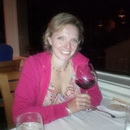 After spending two years in British Columbia, Dianne completed her Sommelier Diploma with the International Sommelier Guild, then relocated to her home base of Waterloo, Ontario. Almost two years later, the wine industry of the west coast was calling her again and she’s back in Vancouver!
After spending two years in British Columbia, Dianne completed her Sommelier Diploma with the International Sommelier Guild, then relocated to her home base of Waterloo, Ontario. Almost two years later, the wine industry of the west coast was calling her again and she’s back in Vancouver!
Many sommeliers work for restaurants or for wine importers. However, Dianne believes the services of a sommelier can be delivered to a wider audience. Her goal is to provide a personalized consultation service in a variety of different settings.
By Brent Gushowaty
The Australian First Families of Wine (AFFW) event held in Vancouver on May 28 of this year was a tremendously interesting and informative experience for anyone involved with wine (and I’m in deep!). There, in a sunny and elegant upper room of the Vancouver Club, were the principals from 11 of the most important and historical (seven were founded in the 19th century) family wineries in Australia.
The speed dating set up was a new one to me. I had heard of it in other settings but it was the first time I had participated in one.
We were put into 12 groups and assigned to one of 12 winery stations around the perimeter. At each station we were poured two wines and given the story of the history, geography, values and passion of the winery by one of the family members themselves.
It was a true privilege but not one to ponder as we only had 5 minutes (marked by a hand rung bell) at each station. Now, I am someone who does like to ponder history, stories and most certainly wine, but there was no time for that.
My initial objectives were:
(1) Listen to each speaker, and ask any questions that came to mind.
(2) Take photos of the event, the speakers and the wines.
(3) Taste and make focused, cogent notes on the wines.
It became immediately apparent that I could pick mmm… maybe 2 out of 3. For me it always has to start with the wine so I did notes, photos and stories in that order. It was a great lesson in tasting and focusing and the wines proved to be very remarkable.
The Wines
The Australian First Families of Wine didn’t just bring the “good stuff” – they also brought the Legends.
The wines were remarkable in many ways. The twenty or so wines we tasted in the speed date round covered much of the breadth and depth and history of the Australian wine story.
They brought a great range of varietals – Roussanne, Viognier, Marsanne, Chardonnay, Semillon, Riesling, Shiraz, Cabernet Sauvignon, Grenache, Mourvèdre, Merlot, Pinot Noir and even some Tempranillo.
They brought dry and sweet wines. They brought value wines at everyday prices and they brought the expensive, ethereal, legendary wines evolved from generations of familial care, passion and experience.
One of the most interesting things about the wines was that across the board, they had excellent flavours matched with suppleness and balancing acidity. There were no lopsided fruit bombs, tannic monsters or over-oaked examples. This was not because they had handpicked the wines for changing tastes. To me the message was very clear. These are the quality wines these family wineries have been making all along.
The initiative came together in 2009 with a purpose to engage consumers, distributors, retailers and restaurants about the character of Australia’s finest wines. Qualification for joining the group rests in satisfying a number of criteria: being family controlled with two or more generations working in the business; possessing a library that offers 20 or more vintages of a brand; and a commitment to environmentally best practices, among others. Each of the twelve founding members were in attendance and pouring at least two different wines.
The first bell moved the thirsty crowd to their assigned tables and the first two wines. A second bell sounded six minutes later, indicating a move to the next table and another two wines. Eleven of the twelve families were represented, so there were 11 tables to visit and 22 wines to taste in just over an hour.
The intense passion of each speaker (and the Australian accents).
At every table, a member of the family, or even the winemaker himself, welcomed every one of us and lovingly shared as much as they could in the allotted 6 minutes about their land, their family history, and of course, their wines.
We doubt there are many Canadians who have met the owner of an iconic Australian winery, but there we were with twelve of the most important, tasting their wines and hearing their story directly from the people responsible for those wines.
Brent Gushowaty
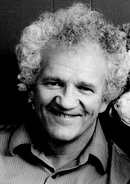 Brent’s serious interest in wine started on his wedding day when a friend suggested letting a red wine “breathe” for an hour and then discovered to his surprise that he was able to taste the difference.
Brent’s serious interest in wine started on his wedding day when a friend suggested letting a red wine “breathe” for an hour and then discovered to his surprise that he was able to taste the difference.
Though mostly self-taught, his interest in wine took him to London in the early eighties to the Wine Department of Christie’s Auction House where a six month series of tutored tastings with the likes of Jancis Robinson, Michael Broadbent, Stephen Spurrier, Serena Sutcliffe and others, made wine a lifelong pursuit.
He has made wine trips to Germany and the Willamette Valley and toured the French wine regions extensively. He holds WSET Advanced (Distinction). In British Columbia, he worked for a number of years as a wine agency representative, founded Balance Wine Consultants, managed a wine bistro in Victoria and founded the Victoria Wine Society. Brent is also a serious amateur chef.
He began the BCPinotNoir.com project and web site in 2011 because he believes B.C. pinot noir deserves to be thought of as being in the “first circle” of pinot noir producing areas that include Oregon, Australia, Burgundy, New Zealand and California. The purpose of the independent project is to help raise the profile of British Columbia’s world class pinot noirs in the larger wine world.
The Australian wines reviewed at these events (click on “Full Review” to see all of the scores, tasting notes and food pairings for each):
White Wine
D’arenberg Wines The Money Spider Roussanne 2013, Australia Drink: 2013-2016. 656710 13.50% D 750 mL $21.95. Full Review
Yalumba Viognier 2014, Eden Valley, South Australia: Drink: 2014-2018. 954644 13.50% XD 750 mL $24.95. Full Review
D’arenberg The Hermit Crab Viognier Marsanne 2013, Mclaren Vale, South Australia: Drink: 2015-2018. 662775 13.10% XD 750 mL $19.95 Full Review
Tahbilk Marsanne 2013, Nagambie Lakes, Central Victoria, Australia: Drink: 2013-2017. 117945 12.50% D 750 mL $17.95 Score: 91/100. Full Review
Howard Park Flint Rock Chardonnay 2012, Great Southern, Western Australia, Australia: Drink: 2013-2017. 410027 13% XD 750 mL $22.95 Full Review
Henschke Tilly’s Vineyard 2013, Adelaide Hills, Eden Valley, South Australia, Australia: Drink: 2013-2018. 61705 12.50% D 750 mL $26.95 Full Review
Yalumba Viognier 2013, Eden Valley, South Australia, Australia: Drink: 2014-2018. 954644 13.50% XD 750 mL $24.95 Full Review
Mcwilliam’s Appellation Series Tumbarumba Chardonnay 2013, Tumbarumba, New South Wales, Australia: Drink: 2014-2018. 409904 13.50% XD 750 mL $29.95 Full Review
Tyrell’s Vat 47 Chardonnay 2011, Australia 93452991477 14% XD 750 mL $54.75. Full Review
Tyrell’s Vat 1 Semillon 2010, Australia 93452265974 13.50% XD 750 mL $54.75. Full Review
Tahbilk Museum Release Marsanne 2008, Australia 652784 13.50% XD 750 mL $26.95. Full Review
Howard Park Porongurup Riesling 2014, Australia 789289 13% D 750 mL $31.95. Full Review
Jim Barry Wines Florita Riesling 2013 Drink: 2014-2019. 13% D 750 mL $19.95. Full Review
Tyrell’s Vat 47 Chardonnay 2010, Australia 93452991477 14% XD 750 mL $54.75. Full Review
Red Wine
Henschke Hill Of Grace Shiraz 2005, Australia Drink: 2009-2019. 399675 14.30% XD 750 mL $875.00. Full Review
Howard Park Abercrombie Cabernet Sauvignon 2012, Margaret River, Great Southern, Australia Drink: 2017-2035. 962613 14% D 750 mL $80.00. Full Review
Henschke Mount Edelstone Vineyard Shiraz 2012, Keyneton, Eden Valley, South Australia, Australia Drink: 2011-2020. 718601 14% XD 750 mL $99.95. Full Review
D’arenberg The Ironstone Pressings Grenache Shiraz Mourvèdre 2006, McLaren Vale, South Australia, Australia: Drink: 2010-2025. 974816 14.50% XD 750 mL $49.95 Full Review
Wakefield Merlot 2013, Clare Valley, South Australia, Australia: Drink: 2014-2018. 683201 14.50% XD 750 mL $17.95 Full Review
De Bortoli Wines – Yarra Valley Villages Pinot Noir 2012, Yarra Valley, Victoria, Australia: Drink: 2013-2017. 408336 13% XD 750 mL $23.95 Full Review
Tahbilk 1860 Vines Shiraz 2009, Victoria, Australia Drink: 2012-2019. 407593 14% XD 750 mL $250. Full Review
Wakefield The Visionary Cabernet Sauvignon 2009, South Australia, Australia Drink: 2012-2020. 407635 14% XD 750 mL $150. Full Review
Yalumba FDR1A Cabernet Shiraz 2005, South Australia, Australia Drink: 2008-2018. 407510 14% XD 750 mL $35. Full Review
Jim Barry Wines The Armagh Shiraz 2006, South Australia, Australia Drink: 2010-2020. 729129 14.50% XD 750 mL $270.00. Full Review
Wakefield St. Andrew Shiraz 2012, South Australia, Australia 626697 14.50% XD 750 mL $37.95. Full Review
Jim Barry Wines The Barry Brothers Cabernet Shiraz 2013, Coonawarra, Australia 14% XD 750 mL $26.95. Full Review
Dessert Wine
De Bortoli Wines – Yarra Valley Noble One Botrytis Semillon 2013, Riverina, New South Wale, Australia Drink: 2013-2020. 917252 10% S 375 mL $31.95. Full Review


